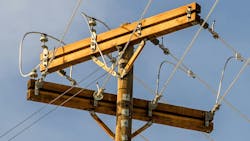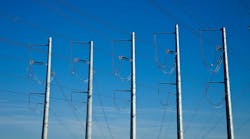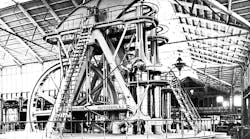The Future of Utility Poles: Resiliency, Technology, and Material Advancements
Over the past few months, the Koppers Utility & Industrial Products team attended nearly a dozen industry events across the country, engaging with utilities, cooperatives, associations, partners, and other experts to discuss the state of infrastructure and the electric utility sector. Koppers, a manufacturer of specialty pressure-treated wood products for utilities, participated in gatherings such as the Northeast Public Power Association (NEPPA) Annual Conference, the Tennessee Municipal Electric Power Association (TMEPA) 2025 meeting, and the Virginia, Maryland & Delaware Association of Electric Cooperatives (VMDAEC) Annual Meeting, among others.
From these conversations, the team identified several key themes and trends shaping the utility pole market and the future of infrastructure.
- Resiliency hardening is accelerating pole replacement and material upgrades. Utilities in hurricane, wind and ice-prone regions are upsizing pole classes to handle higher combined loads. Grid hardening is a key trend in infrastructure right now, aiming for better performance under severe weather.
- Wildfire risk is driving shifts toward fire-resistant treatments. In high fire-threat areas, utilities are adding fire-resistant wraps and coatings to help reduce damage to poles.
- Surging AI and data center demand is reshaping the grid. Industry leaders remain uncertain about the long-term impact of the surge in AI workloads on utilities, infrastructure investment and consumers. Even as major tech companies could be on the hook for ownership of their power generation, the continued increase in demand could still potentially drive costs and change grid dynamics, with new strains on distribution networks.
- Broadband and 5G attachments are reshaping pole economics and infrastructure replacement activity. This is resulting in more pole-top swaps to support antennas/radios, standoff brackets and stronger crossarms and hardware. Strategically, utilities are using the 5G/broadband wave to modernize structures, making them taller, stronger, and “attachment‑ready”, to enhance the speed of future deployments.
- Wood remains the dominant and highest demand material for utility poles. While certain areas within the infrastructure space are diversifying materials used for poles, including composite, steel and concrete, treated wood continues to be the material of choice given its longer lifespan and durability.
- Technology is reshaping how utilities inspect poles at scale. Utilities are moving from cycle-based to risk-based pole inspection, using drones and AI-enabled technology for inspections. Additionally, airborne laser scanning through drones or helicopters (UAV/heli LiDAR) and computer vision are being utilized for defects (rot, shell decay, splits). Nondestructive testing is being used to extend asset life and prioritize infrastructure replacements.
- Supply chain and lead-time management remain a planning priority. While post-pandemic pressures have eased within the infrastructure sector, storm seasons and large programs (wildfire hardening, broadband, GRIP grants) can tighten regional availability of treated wood and hardware, making multi-year contracting a common practice.
- Undergrounding is expanding selectively, but overhead utility poles remain the workhorse. Underground utility lines are gaining slight traction via utility and regulatory programs, primarily in high-risk wildfire or urban circuits. However, most networks will continue using overhead systems with hardened poles and covered conductors due to cost, reliability and deployment speed.
Together, these signals point to a stronger, smarter electrical grid, with a focus on resiliency, expansion and data-driven solutions. With wood utility poles remaining the backbone of the grid, the opportunity now is to modernize faster and more efficiently. As the largest American-owned manufacturer of utility poles, Koppers will continue to support these endeavors, helping communities stay connected.
Read More
About the Author
Michelle Griffin
Michelle Griffin is Vice President of Sales Support and Development for Koppers Utility Products & Services business segment. With more than 30 years of experience in the utility industry, Michelle brings strong expertise and skillful leadership to her role, where she focuses on driving strategic growth and operational excellence. Prior to her current position, she served as Vice President of Sales and as a Sales Manager, consistently building strong client relationships and delivering results.


